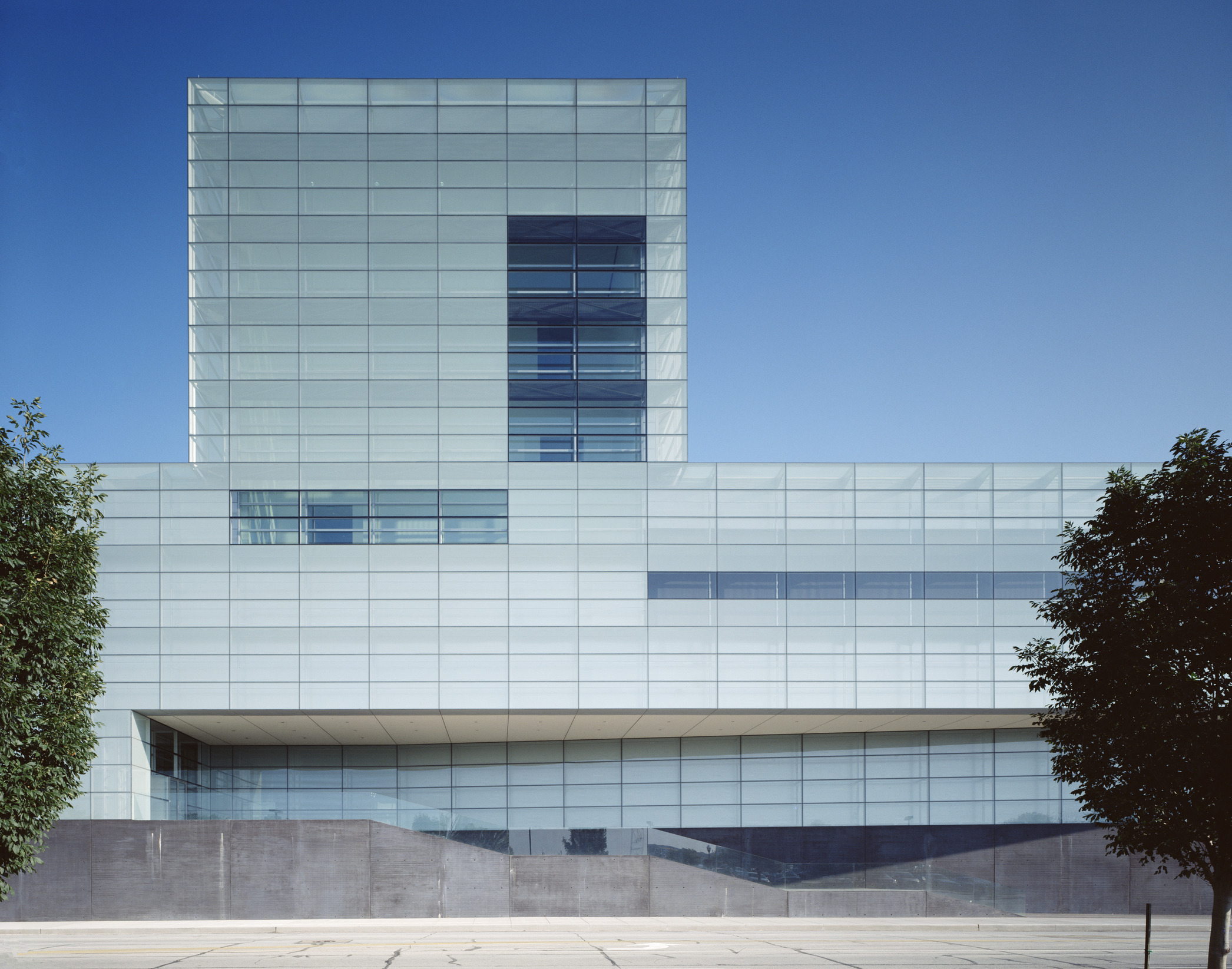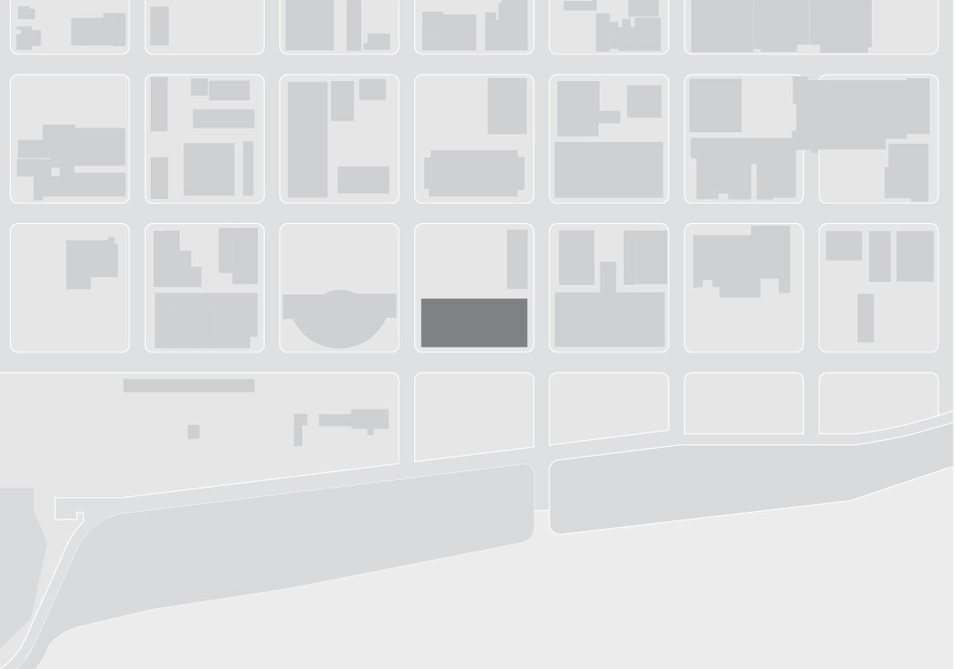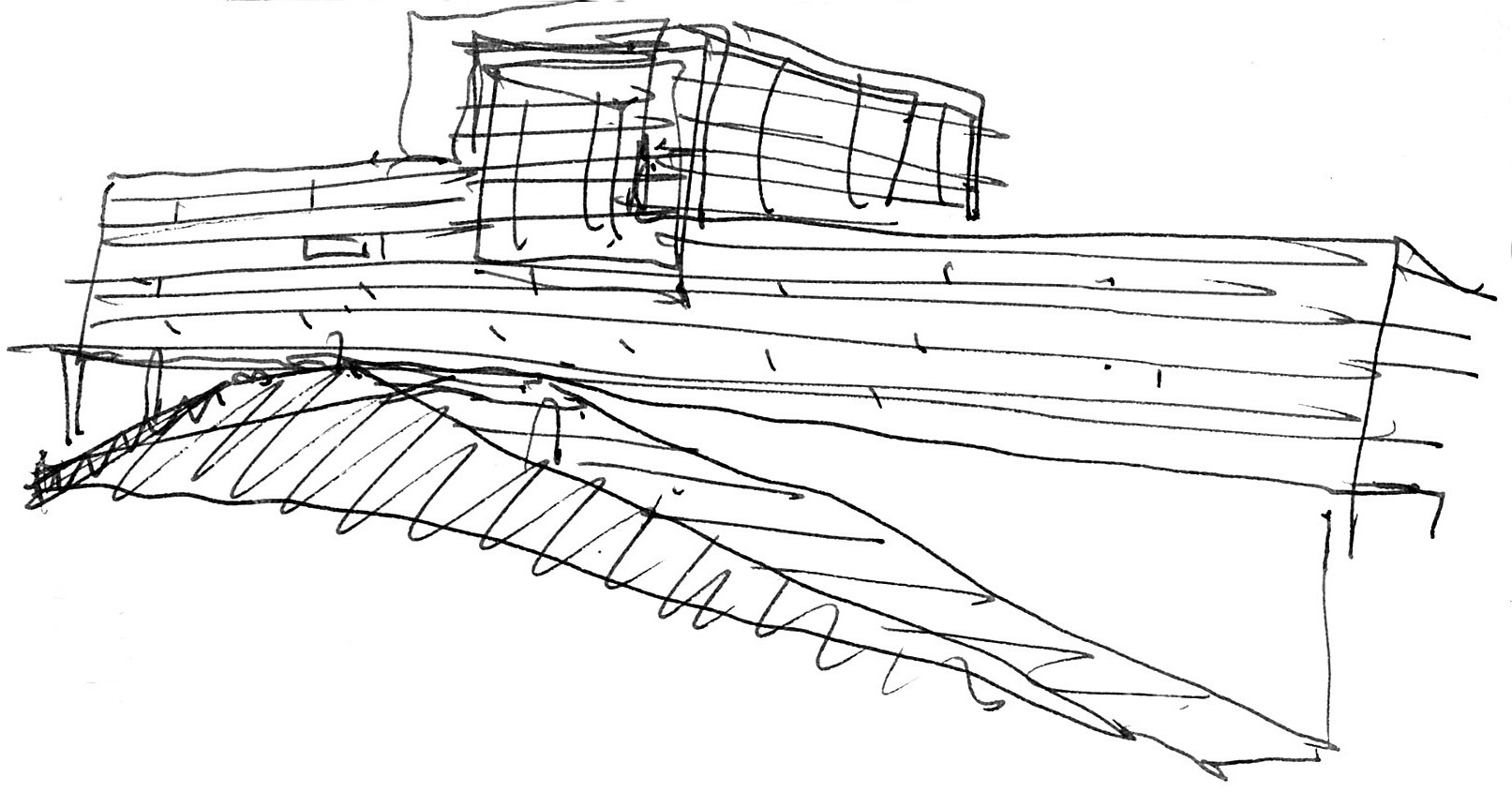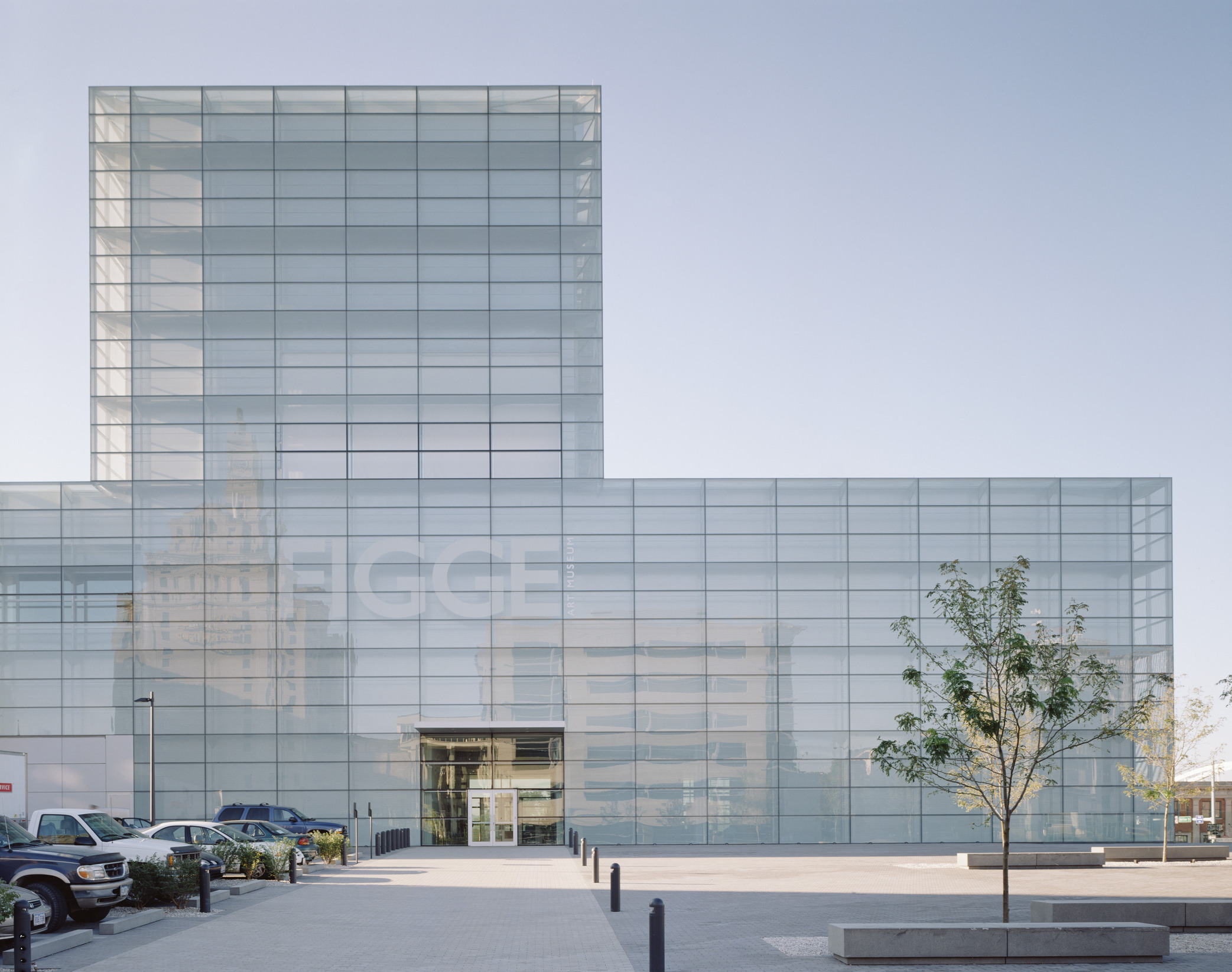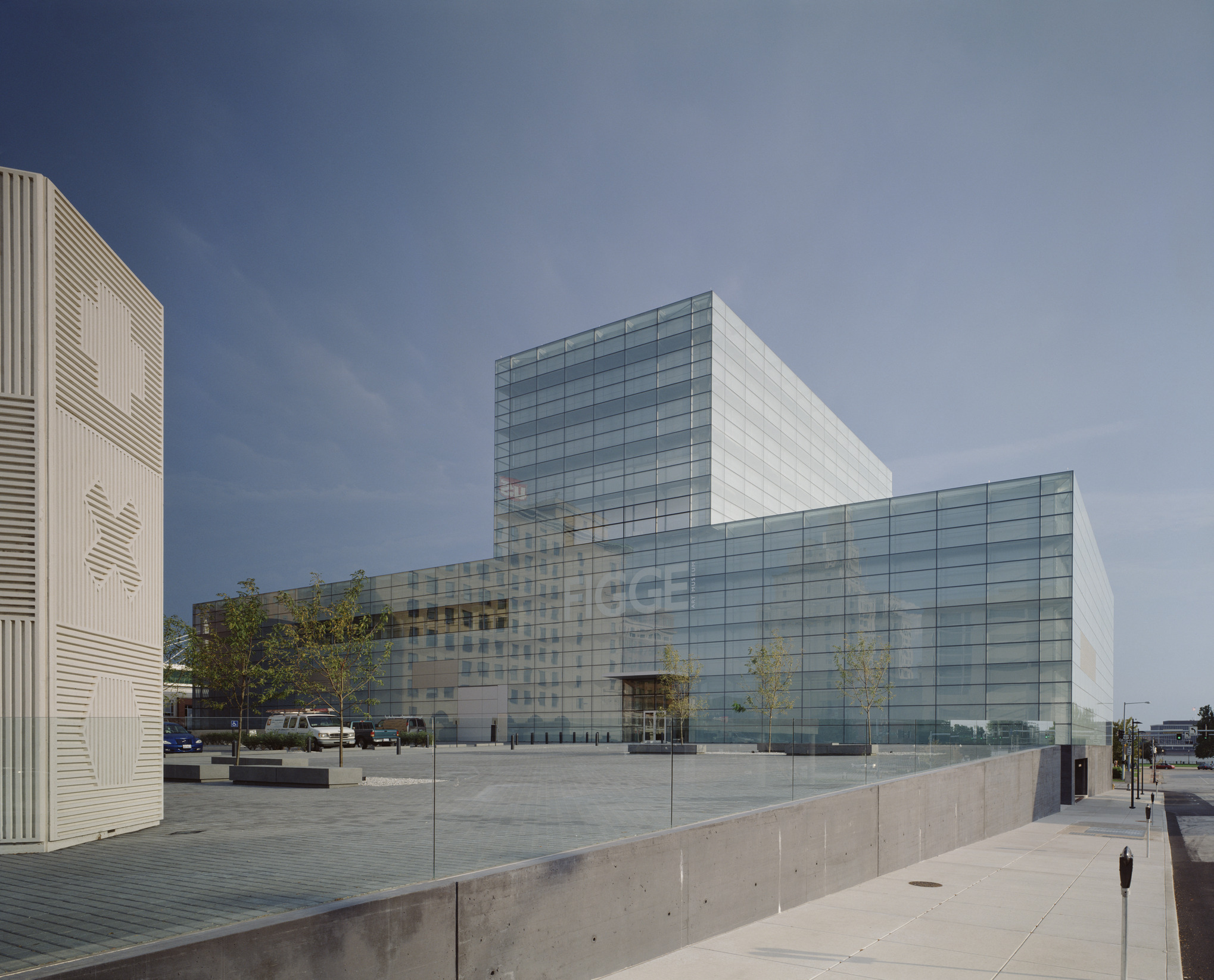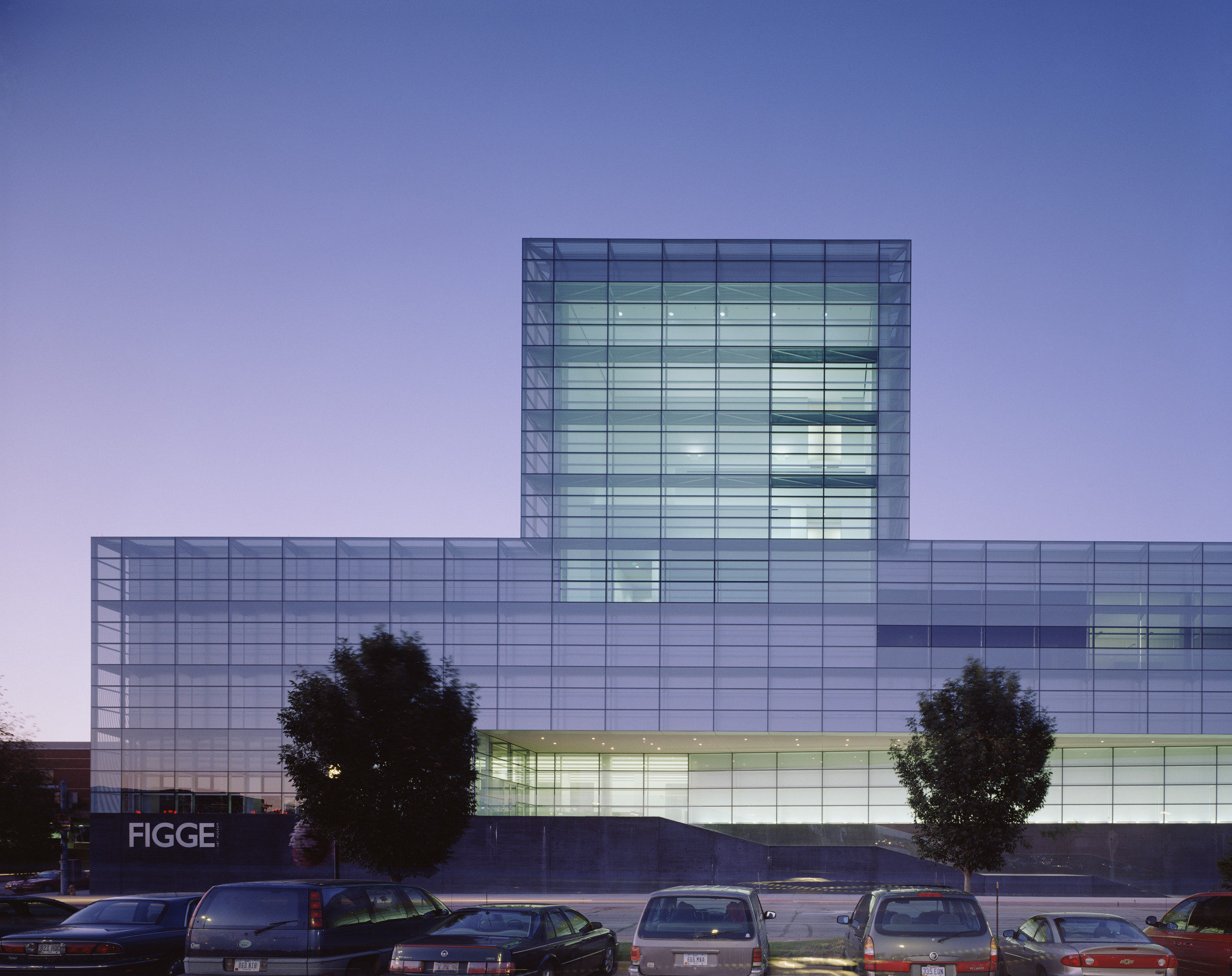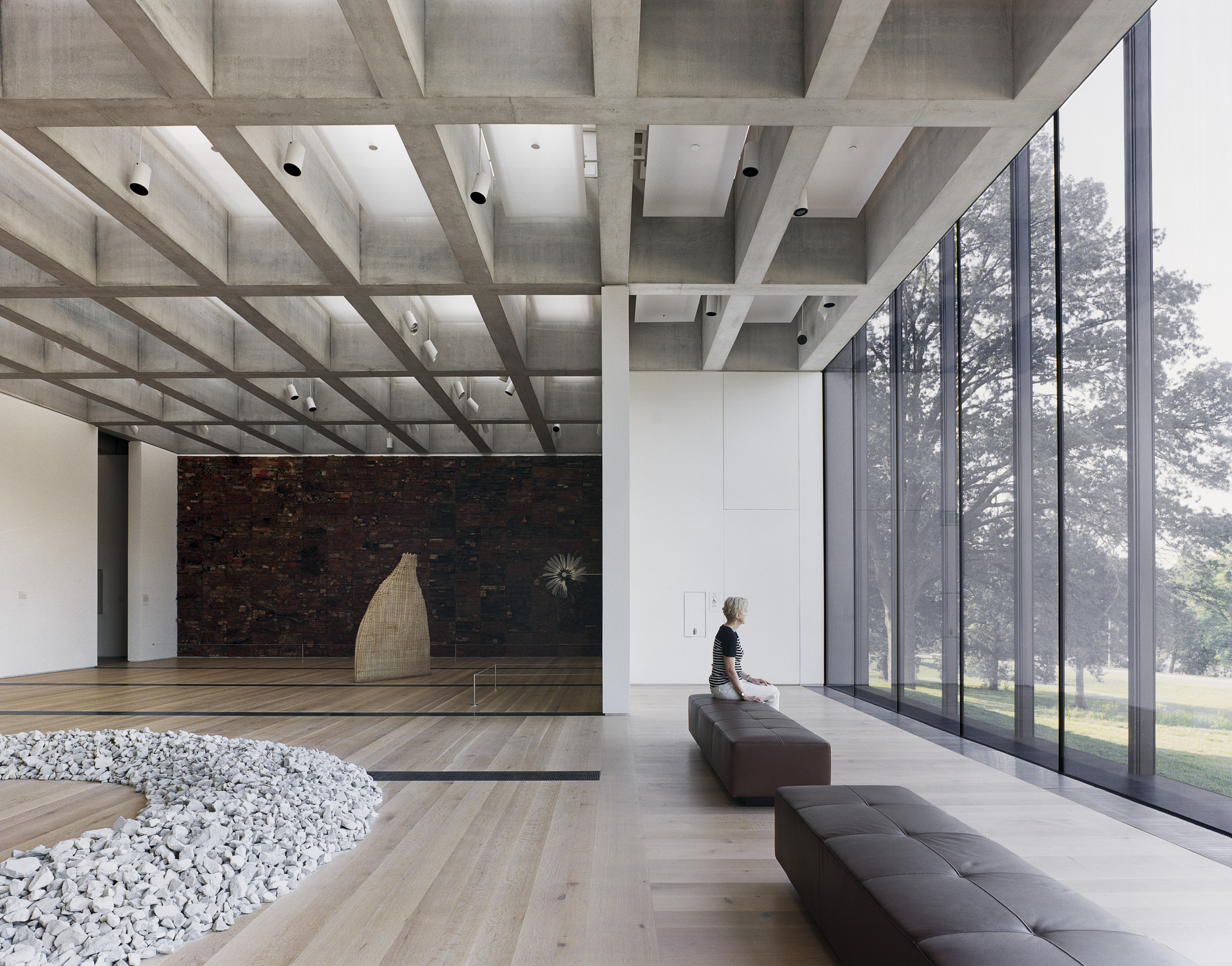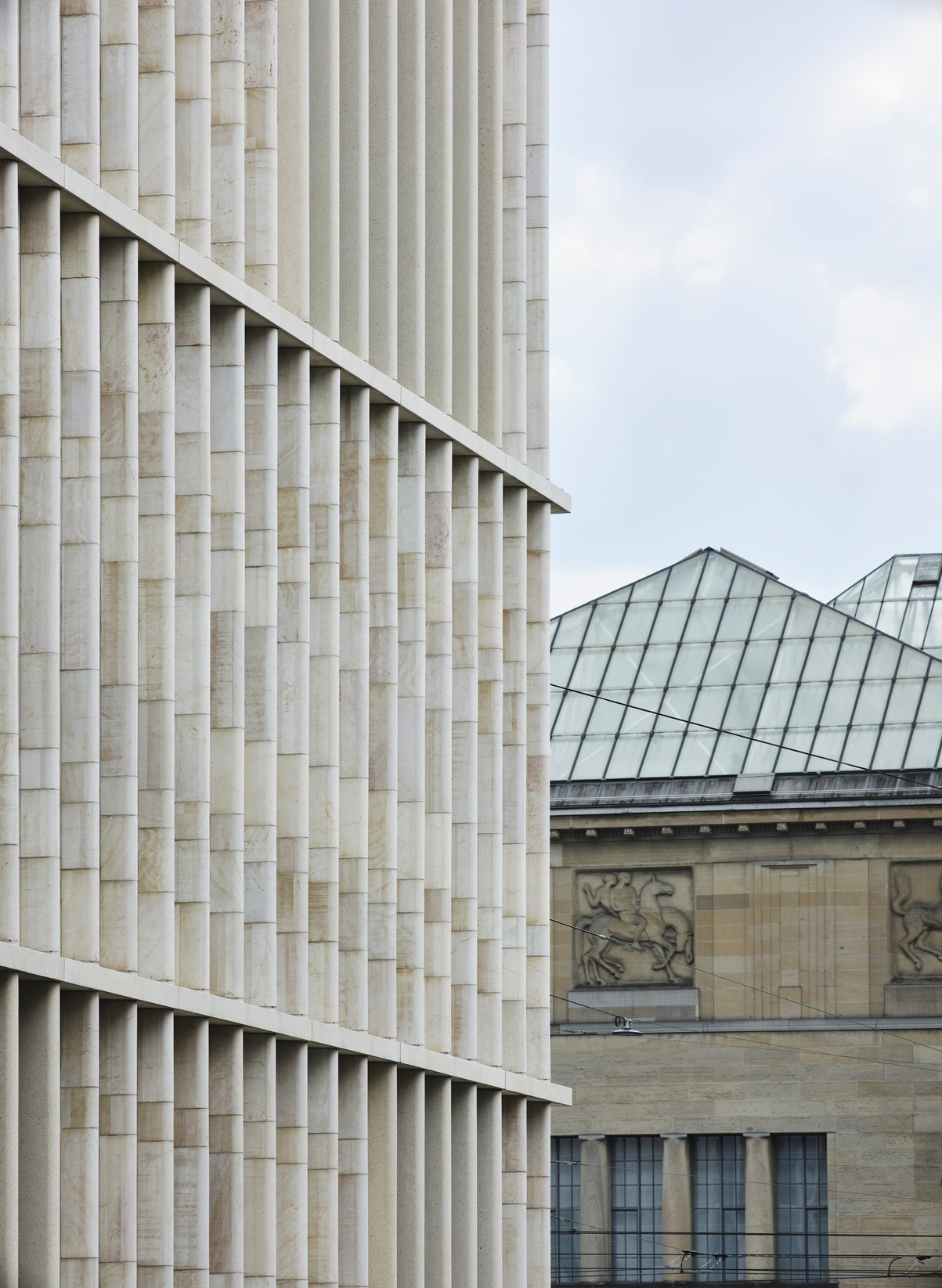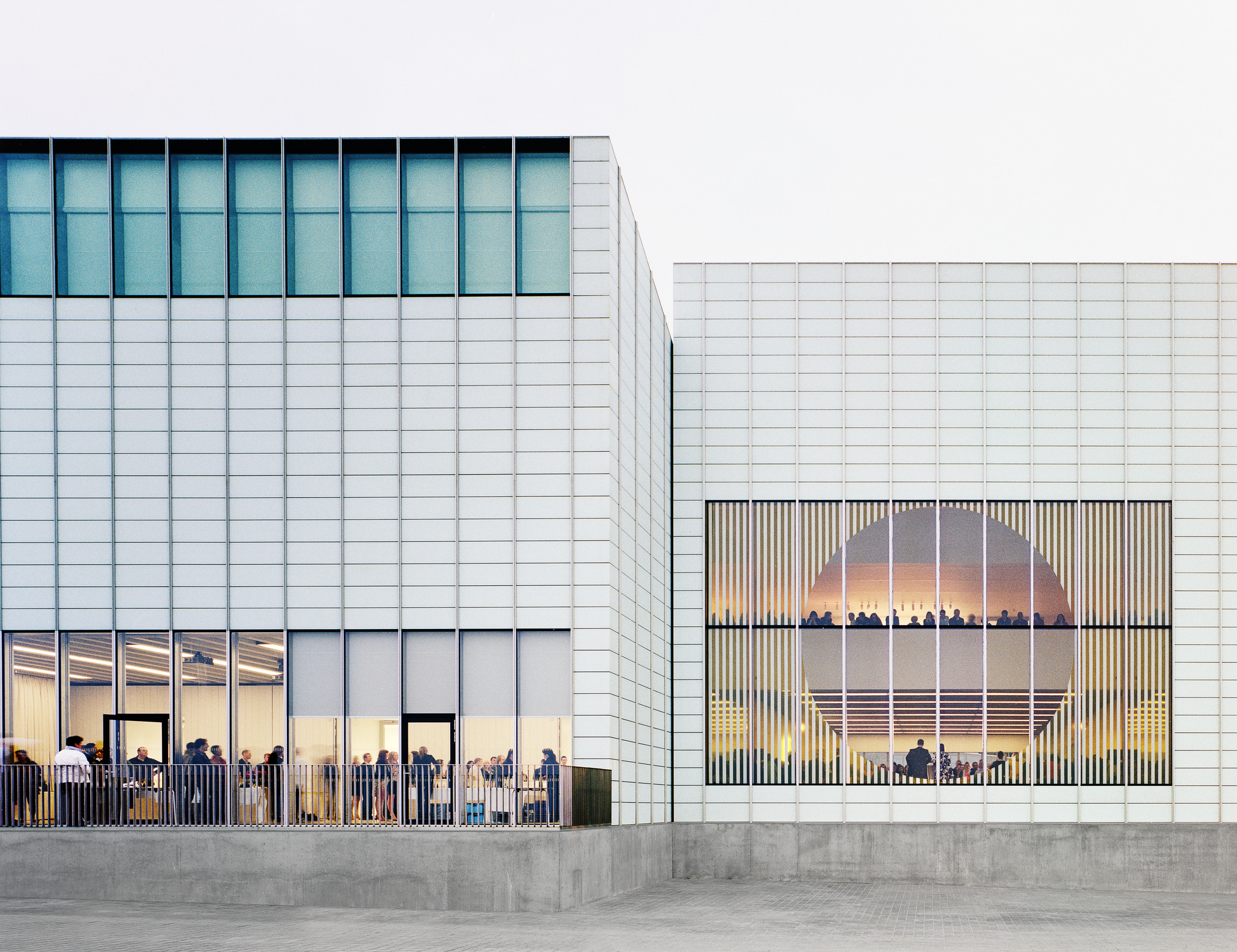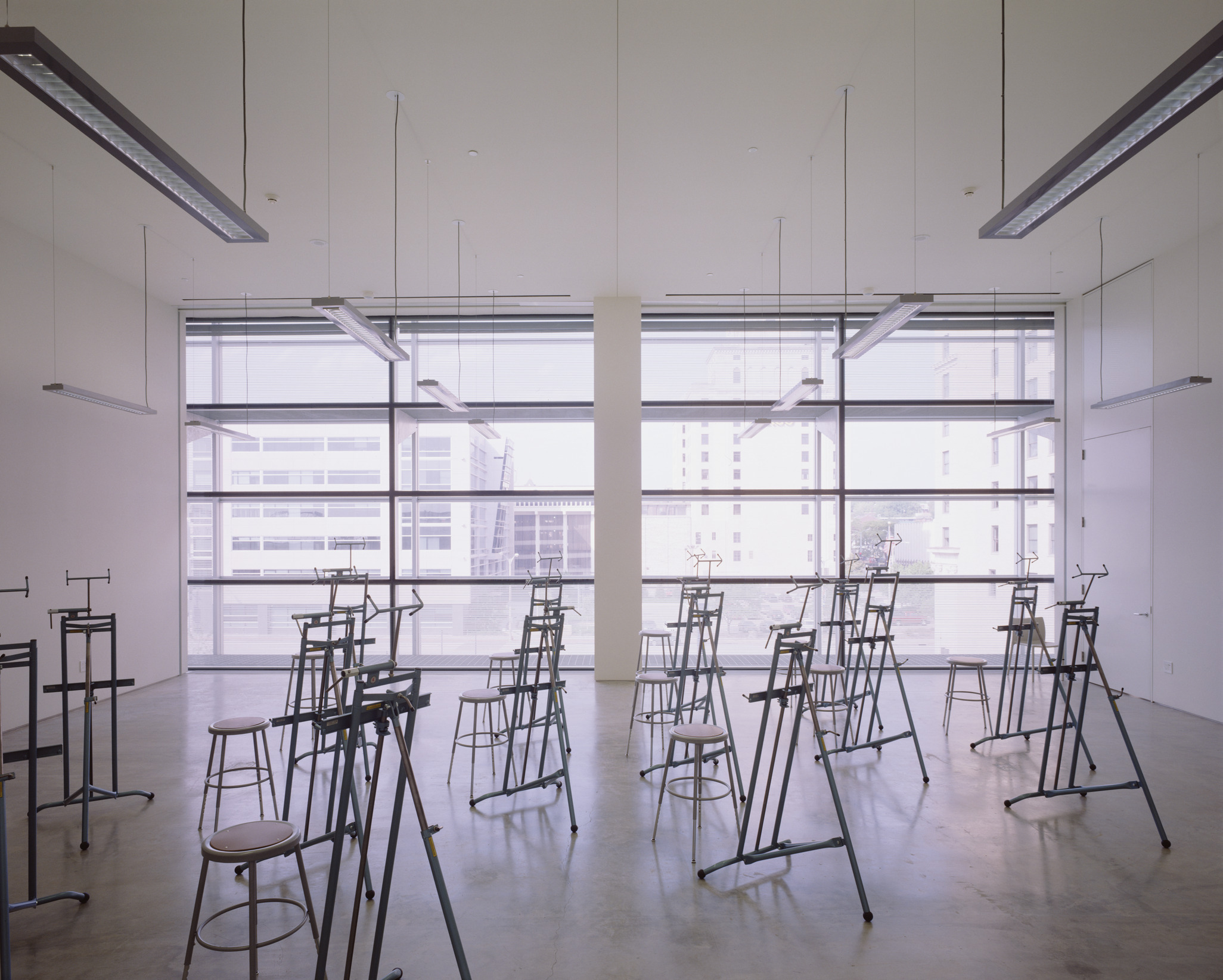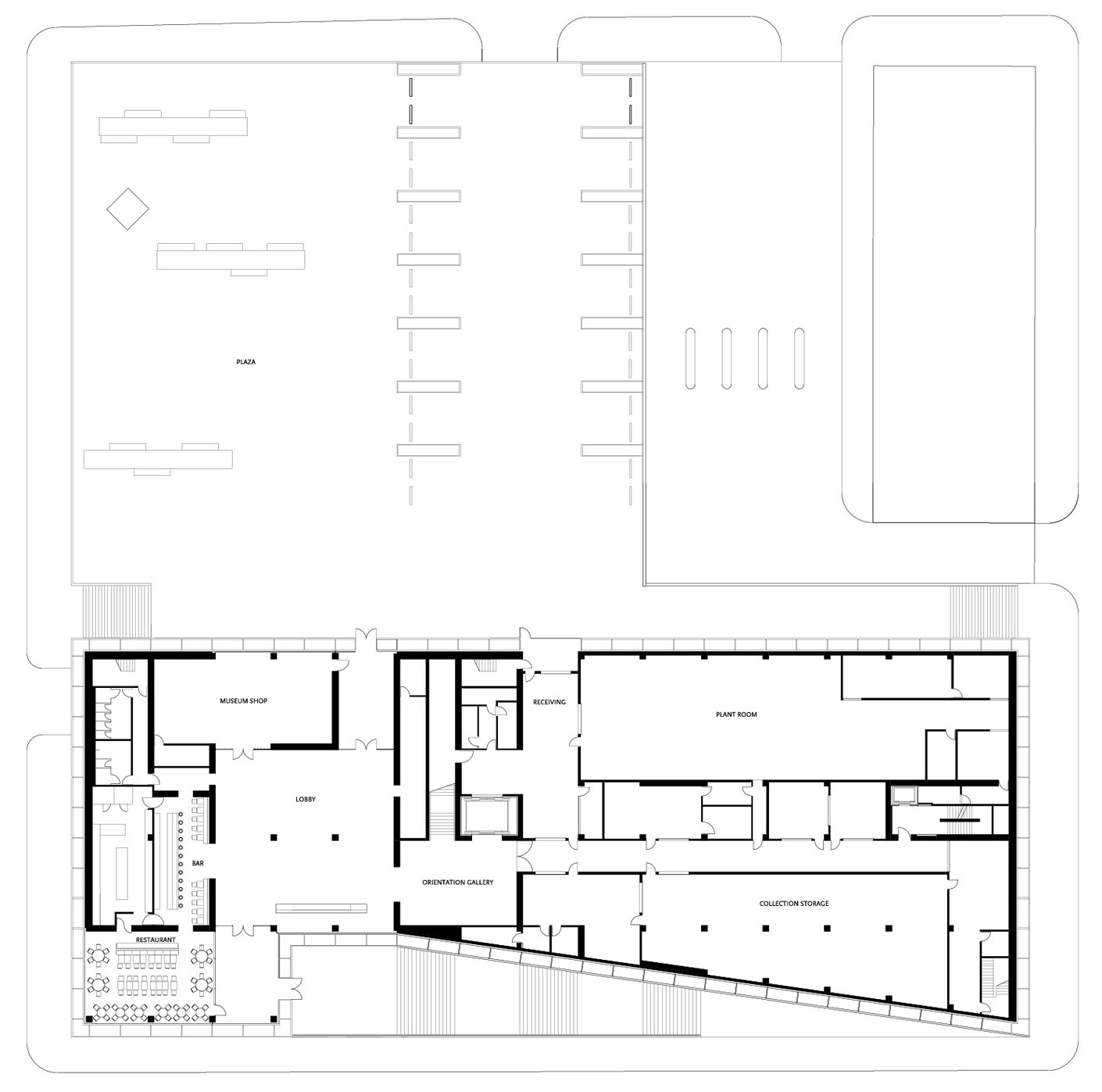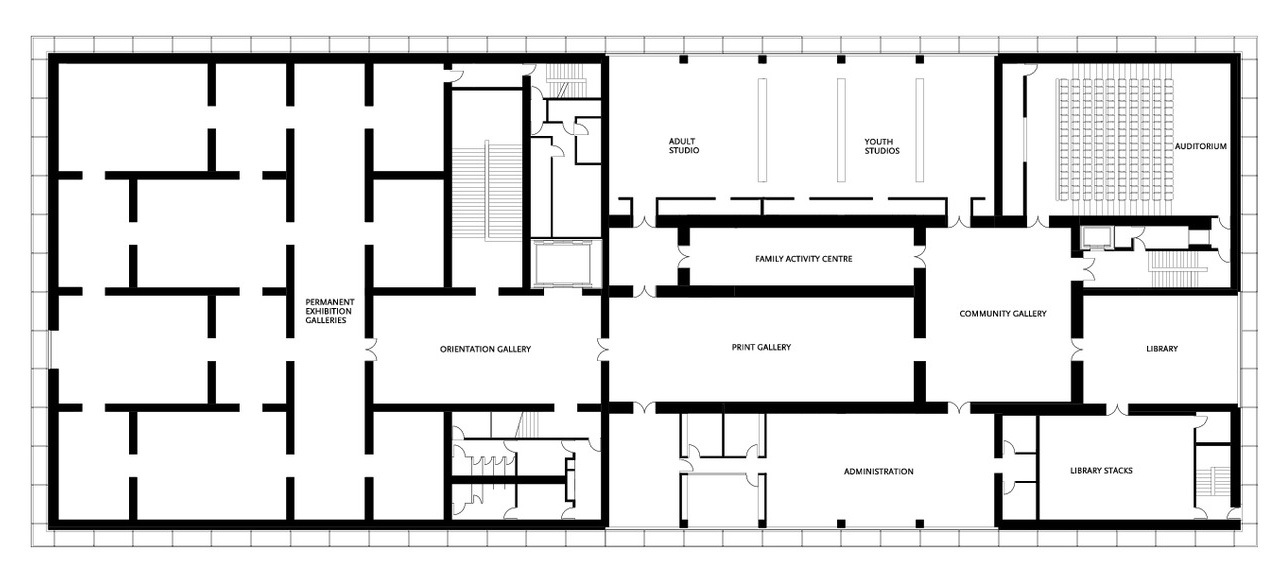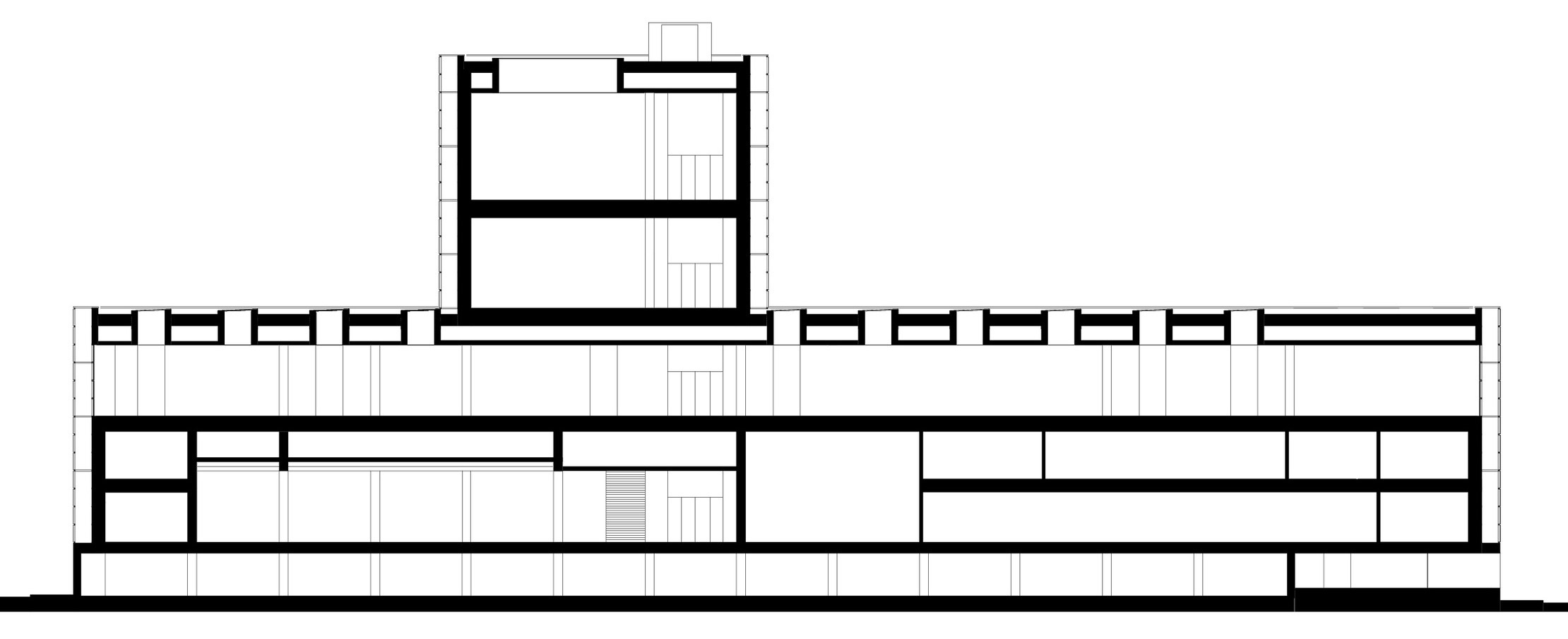Figge Art Museum
Iowa, USA
1999–2004
The centre of Davenport, located on the banks of the Mississippi on Iowa’s eastern border, suffers from many of the problems endemic to a number of American cities. Over the years the area has witnessed the departure of much of its residential and business community, leaving downtown Davenport with little of the vibrancy normally associated with urban life. In an attempt to reinvigorate this area, and recreate a connection to the river, the city identified the relocation and re-housing of the Davenport Museum of Art (renamed the Figge Art Museum) as the catalyst in a programme of urban regeneration.
Identifying a wish to create some kind of emblematic building for the new city, the design of the Figge Art Museum was conceived as a monolithic glass structure that would powerfully yet simply landmark Davenport’s redeveloped waterfront. Its architecture is based around the idea of a simple volumetric block enveloped by opaque, transparent, and translucent surfaces. These glass surfaces are fritted with horizontal banding that varies in density so as to define each of the museum’s formal elements. In urban terms, the design looks to support the old city grid by filling one half of a previously empty city block.
While maintaining a strong and singular outline, the design of the museum reveals itself as more varied than its urban footprint would suggest - different frontages reflect differing site conditions and define each of the building’s facades with distinct approaches; city plaza, street entrance, and riverside terrace. Inside the building the programme for its design and layout was based largely on the existing Davenport Museum of Art, with its rich mix of exhibition and non-exhibition functions, with the inclusion of educational spaces, drawing and study studios, lecture and library facilities.
The design encourages the overlap of these functions and creates a public route through the building. Visitors are aware of the activities of the Figge Art Museum, and students and artists have an immediate relationship with the collections.
Data and credits
- Project start
- 1999
- Completion
- 2005
- Gross floor area
- 10,000m²
- Client
- Davenport Museum of Art
- Architect
- David Chipperfield Architects London
- Contact architect
- Herbert Lewis Kruse Blunck Architecture
- General contractor
- Russell/Pepper Joint Venture
- Structural engineer
- Jane Wernick Associates / Charles A. Saul Engineering
- Services engineer
- Arup
- Curtain wall cosultant
- W J Higgins and Associates
- Photography
- Christian Richters
